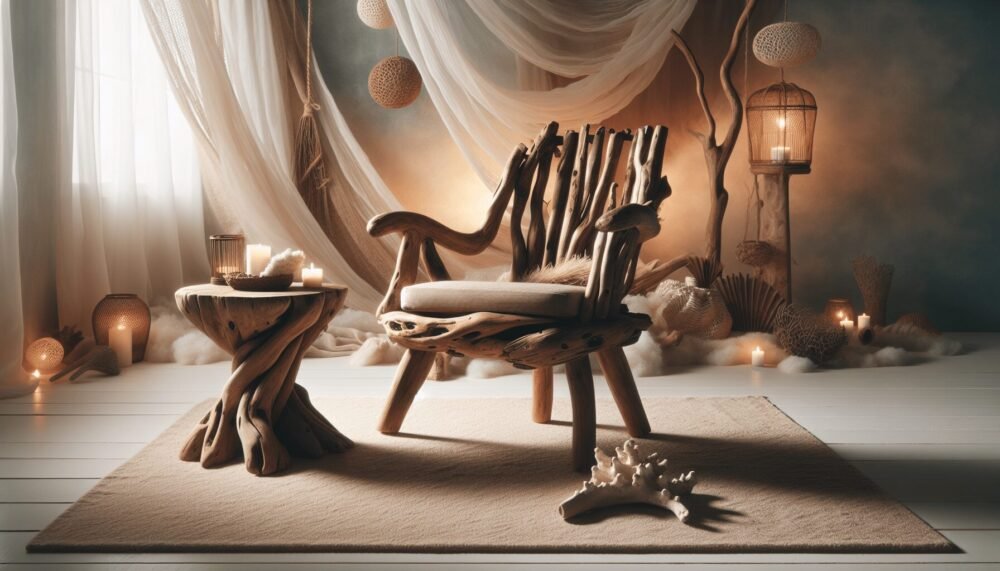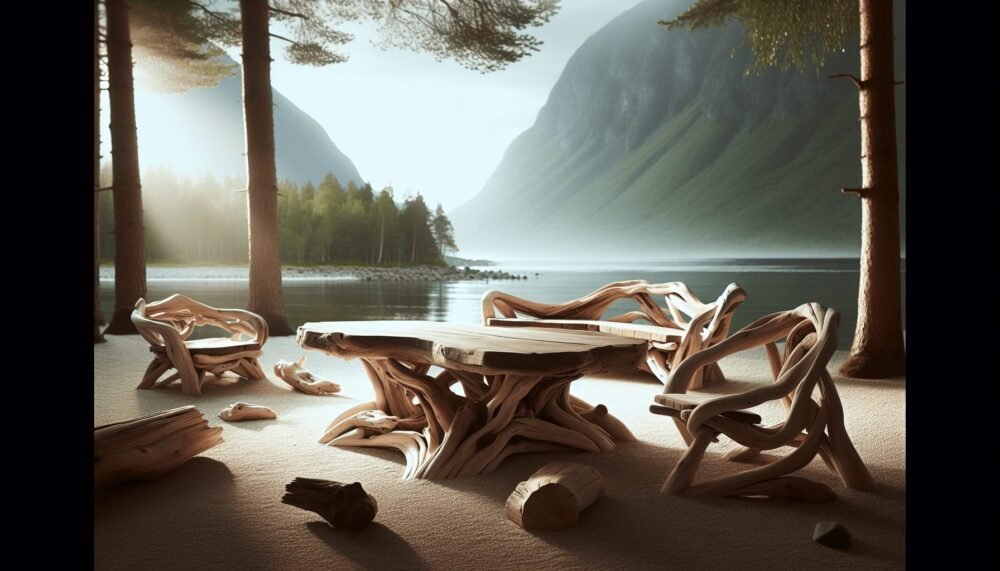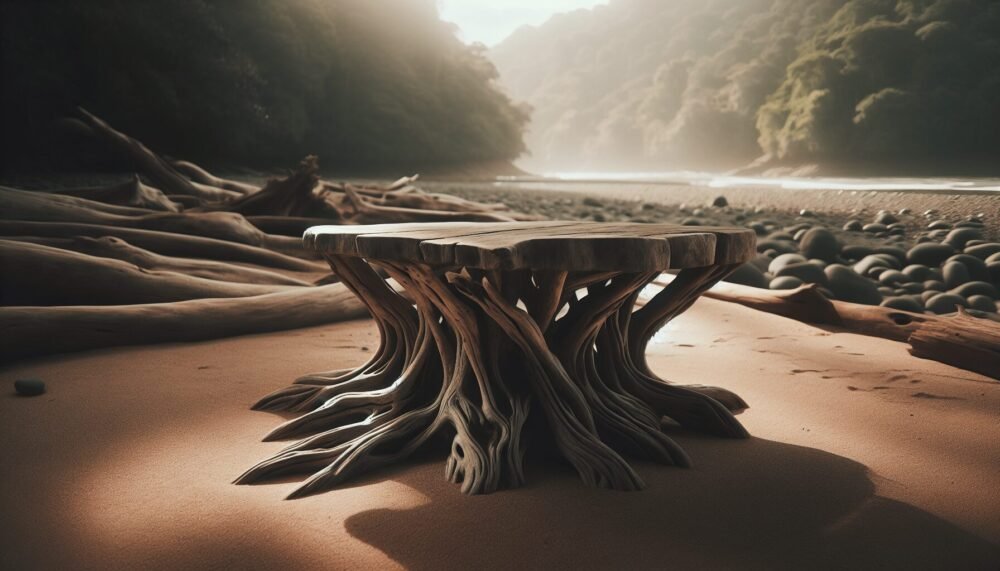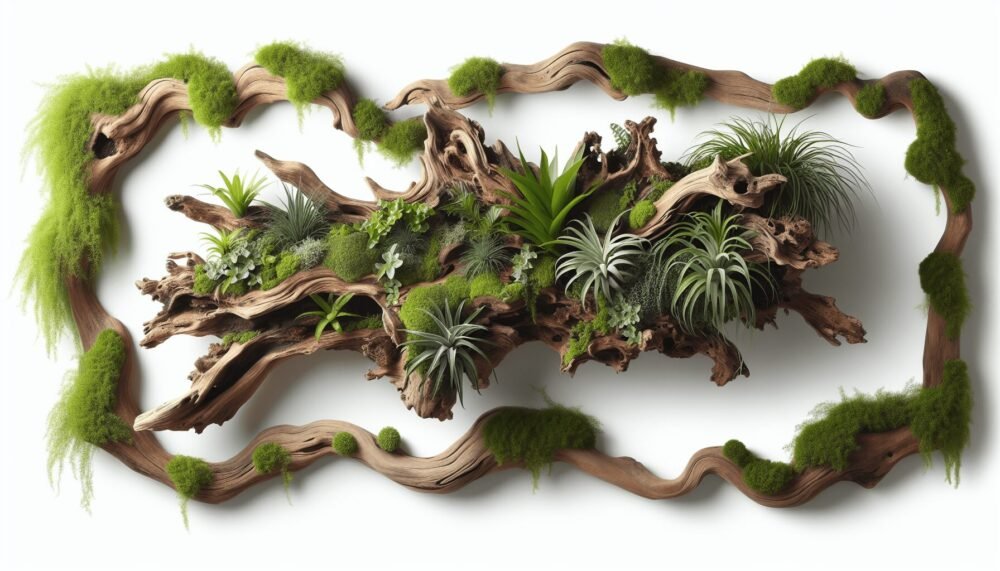Imagine transforming your living space into a coastal retreat with pieces that tell a story of their journey through the ocean. “Driftwood Furniture Decor” explores the beauty and charm of incorporating natural driftwood into your home. You’ll discover how each unique, weathered piece can bring a touch of nature’s artistry to your furniture and decor, creating a warm, inviting atmosphere that feels both rustic and refined. Dive into the world of driftwood and see how you can infuse your home with the timeless elegance of the sea. Have you ever considered bringing a touch of nature to your home decor? Driftwood furniture decor might be just what you’re looking for! This unique style merges rustic charm with coastal elegance, creating a laid-back yet sophisticated ambiance in any room. Plus, it’s environmentally friendly since it repurposes wood that’s already been discarded by nature.
What is Driftwood Furniture?
Driftwood furniture is crafted from wood that has been washed ashore by rivers, lakes, or oceans. This wood undergoes a natural transformation as it’s weathered by the elements, giving it a distinct look and feel that’s hard to replicate with other materials. The irregular shapes, textures, and colors of driftwood make each piece of furniture one-of-a-kind.
Origins and Types of Driftwood
Driftwood can originate from different kinds of wood including oak, pine, maple, and even exotic woods like teak. The type of wood affects its hardness, grain, and color, making each piece unique.
Table: Common Types of Driftwood
| Type of Wood | Characteristics | Common Uses |
|---|---|---|
| Oak | Hard, dense, dark color | Tables, chairs, bed frames |
| Pine | Soft, light color | Shelves, wall decorations |
| Maple | Medium hardness, smooth texture | Cabinets, coffee tables |
| Teak | Very hard, resistant to moisture | Outdoor furniture, garden accessories |
Aesthetic Appeal of Driftwood Furniture
One of the most compelling reasons to incorporate driftwood furniture into your home is its aesthetic appeal. Driftwood has a natural, organic look that brings a sense of tranquility and timeless beauty to any space.
Scandinavian and Coastal Styles
Driftwood fits well into both Scandinavian and coastal design styles. Its natural hues and textures blend seamlessly with the minimalist and functional aspects of Scandinavian decor, while its oceanic origins make it a perfect match for coastal settings.
Versatility in Design
Driftwood furniture isn’t just confined to one type of aesthetic. Whether you’re going for a bohemian, rustic, or even industrial look, driftwood can be incorporated effectively.
Table: Driftwood in Different Design Styles
| Design Style | How Driftwood Fits |
|---|---|
| Scandinavian | Provides natural textures to minimalist decor |
| Coastal | Enhances beachy, nautical vibes |
| Bohemian | Adds an earthy, eclectic touch |
| Rustic | Complements woodsy, homestead elements |
| Industrial | Offers a soft contrast to metal and concrete |

Benefits of Driftwood Furniture
Using driftwood furniture isn’t just about aesthetics; there are multiple benefits, both environmental and practical.
Environmental Sustainability
Driftwood furniture is an excellent choice for the environmentally conscious. Since it’s made from wood that would otherwise go to waste, you’re helping to reduce deforestation and minimizing your carbon footprint.
Unique and Handcrafted
Each piece of driftwood is unique, and thus every item of furniture made from driftwood has its own character and history. This gives you a one-of-a-kind piece that can’t be found anywhere else.
Durability
Many types of driftwood, especially hardwoods like oak and teak, are incredibly durable. They’ve already stood the test of time and elements, making them a robust choice for furniture.
How to Choose Driftwood Furniture
So, you’re convinced on the driftwood decor, but how do you go about choosing the right pieces? Here are some tips.
Consider the Space
First and foremost, think about where you want to place the driftwood furniture. Is it for your living room, bedroom, or maybe the patio? Driftwood pieces come in various sizes and shapes, so make sure it fits well within your space.
Match with Existing Decor
You don’t need to revamp your entire room to incorporate driftwood furniture. Look for pieces that complement your existing decor.
Quality and Craftsmanship
Always check the quality and craftsmanship of the driftwood furniture. Well-crafted pieces will have smooth finishes and sturdy constructions. Don’t hesitate to ask the seller about the origin of the driftwood and the craftsmanship involved.

DIY Driftwood Projects
Feeling creative? You can also take on some DIY driftwood projects. Driftwood can be relatively easy to work with if you have some basic woodworking skills.
Simple DIY Ideas
- Driftwood Shelves: Attach a piece of driftwood to your wall using sturdy brackets to create a natural, rustic shelf.
- Candle Holders: Use smaller pieces of driftwood as unique candle holders.
- Picture Frames: Create a rustic frame by assembling small driftwood pieces around your pictures.
Maintenance and Care
To keep your driftwood furniture looking its best, a little maintenance is required. Here’s how to care for it.
Cleaning
Dust your driftwood furniture regularly with a soft cloth. For deeper cleaning, use a mild soap and water solution, but make sure to dry it thoroughly to prevent moisture damage.
Sealing and Finishing
Driftwood can be left in its natural state or finished with a clear sealant to protect it from wear and tear. If you do choose to seal it, be sure to use an eco-friendly product.
Repairing
Minor cracks and chips can add to the character of driftwood furniture, but if you need to repair a piece, wood glue and clamps can be used. For larger repairs, consult a professional.
Where to Buy Driftwood Furniture
You have several options when it comes to purchasing driftwood furniture, from online marketplaces to local artisans.
Online Marketplaces
Websites like Etsy, Wayfair, and Amazon have a wide selection of driftwood furniture. Here, you can read reviews, compare prices, and find something that fits your style and budget.
Local Artisans
Often, the best driftwood furniture comes from local artisans. Supporting local businesses not only means you get a unique piece but also helps the community.
Specialized Stores
Some stores specialize in driftwood and reclaimed wood furniture. Visit these for higher quality, hand-crafted pieces.
Conclusion
Driftwood furniture decor offers a unique, eco-friendly way to bring the beauty of nature into your home. Its aesthetic appeal, coupled with the benefits of sustainability and durability, make it an excellent choice for a wide variety of interior design styles. Whether you opt to purchase ready-made pieces or take on a DIY project, driftwood furniture is sure to add a touch of rustic elegance to any space.
By incorporating driftwood furniture into your home, you’re not just making a design statement; you’re also contributing to environmental sustainability. So why not give it a try and enjoy the timeless beauty and charm that driftwood has to offer?
Feel free to explore different types, match with your existing decor, and even try your hand at some DIY projects. Trust us, you won’t regret it!

















